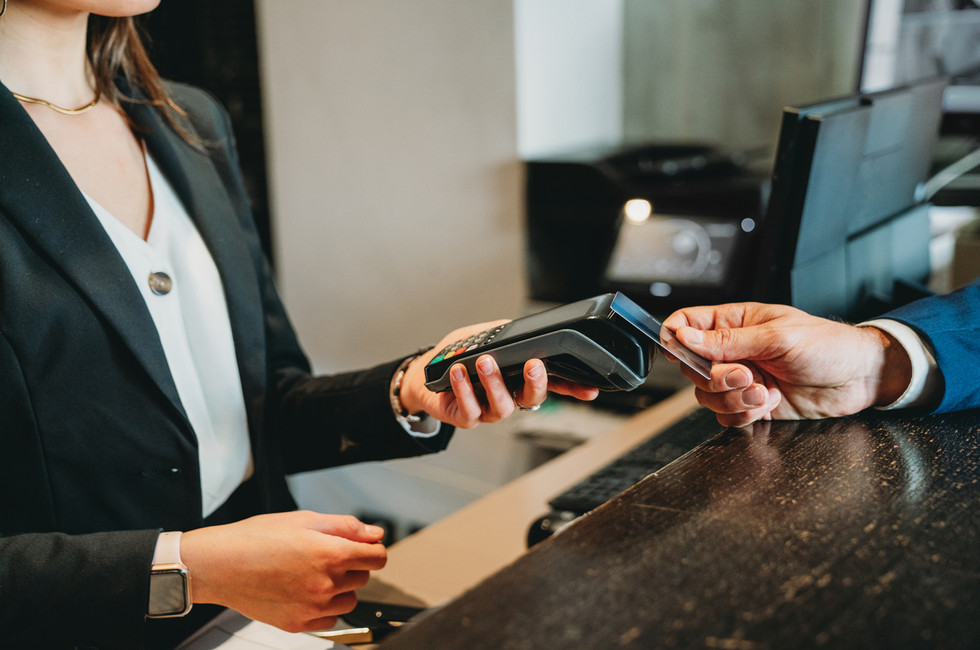
Why virtual cards for business are the next big thing



Did you know that B2B virtual card payments have a predicted transaction volume of $553 billion? Online payments analyzer PYMTS indicated that this will happen by 2024, adding that 80% of B2B transactions will be digital by 2025.
By submitting this form, you agree to receive emails about our products and services per our Privacy Policy.
At Payhawk, we're often asked what exactly virtual cards for business are. Is it the same as Google Pay and Apple Pay? Well, yes and no. As consumers, many business leaders have experience with virtual payment methods, but they're still discovering the benefits of digital transformation in their business finances.
For a start, virtual cards have existed for a long time. In some sectors, like travel, they have already become one of the primary means of payment.
There are several kinds of virtual cards across both business and consumer fronts, but there are three main types in general.
Types of virtual cards for business
- The single payment virtual card. For example, this card is created for a specific vendor or amount; think digital gift cards.
- A virtual card connected to a physical card: in this example, your team members could all have access to a virtual card that's ultimately connected to a plastic or metal company card.
- Virtual cards with a dedicated budget so that you can assign funds to your marketing team for LinkedIn campaigns or to your product team for SaaS subscriptions, for example.
Now, you might be thinking: what's the difference between a virtual card and a digital wallet?
Virtual cards often don't have a physical carrier and can't be used in a regular shop. A virtual card is just a set of data (a card number, an expiration date, a security code, and a pin code) that you can apply to online payments.
However, thanks to digital wallets like Apple Pay and Google Pay, you can "carry" your virtual card in your phone and pay at shops and restaurants, etc., as long as they have up-to-date POS terminals.
The benefits of business digitization are huge, especially now, with distributed, hybrid, and remote working becoming the norm. Expense management software and corporate cards are one way your business can digitize its spend to empower your people all over the globe to pay for work necessities. But what other benefits can virtual cards bring to your business?
Choose the right spend management solution with our RFI template
Are virtual company cards more time and cost-efficient?
Virtual cards can be used when your team makes company purchases outside of traditional supplier invoice payments, especially when they need to make them quickly. Instead of asking your employees to wait for a plastic card in the post, you can issue a virtual card in one click and allow your team to spend immediately without interfering in their productivity.
Your accounts payable (AP) team will be liberated from a lot of manual work thanks to virtual company cards too. Instead of relying on cash or other payment methods, all the transactions are digitized, which allows your team to operate with less process and admin.
Virtual company cards also eliminate the whole employee reimbursement process, empowering your employees and giving more time back to your payroll and HR departments.
Your business can save costs for each part of the expense management process that’s removed and automated. Work out your company's hidden payment and expense management costs here.
Virtual cards are lower risk
At Payhawk, we offer virtual cards for businesses that aren't directly linked to your primary corporate bank accounts. Instead, the virtual company cards are connected to a virtual wallet, so your information isn't at risk. Adding these cards to your e-wallet via Google Pay or Apple Pay adds another layer of safety.
Another security feature includes the virtual card number itself; thieves and scammers can't trace a virtual card number unless the cardholder's identity or actual credit card has been identified. This security measure prevents theft of personal information and its possible misuse.
Finally, virtual cards also have a minimum and maximum credit limit per transaction each day, and they're only valid for a specific period, identified by the card issuer. End-users who identify suspicious activity on their cards can immediately block them online.
Less plastic, more sustainable
A couple of years ago, an environmental study from WWF International mentioned that people worldwide could be ingesting five grams of microscopic plastic particles weekly, the equivalent weight of a credit card.
The environmental impact of plastic pollution is well known, and researchers mention that consumption changes can help diminish the effects. One simple way could include introducing virtual company cards at your business.
Budget accuracy and transparency
Virtual company cards allow you to manage spending limits in real time. Breaking up your budget and allocating it via different virtual cards quickly and efficiently is better than dealing with multiple payment accounts. Also, you can track all transactions and add spend control policies to each card, so you don't have to worry about overspending.
While there are a lot of great benefits to virtual cards, there are a couple of issues to consider. For instance, sometimes vendors don't accept virtual card payments if they use an old POS terminal. Or, you might find that your virtual card for business isn't connected to the appropriate ERP or accounting software, for example. For Payhawk customers, this isn't an issue as we integrate with several accounting and ERP systems, so no extra work is required for your finance team or end-users.
If you like the sound of virtual company cards, book a demo now, and learn about our other features and how they can transform how you manage payments and expenses in your business.
An integral part of Payhawk’s journey from the very beginning, Raquel has seamlessly transitioned across key roles—starting in sales, building the customer success team from the ground up, and later moving into content and product marketing. Today, she thrives as a Senior Product Marketing Manager and also leads the company’s ESG efforts. Outside of work, Raquel is passionate about the outdoors and enjoys swimming, hiking, and baking for her two children.
Related Articles


Why Legacy Expense Tools Failed to Modernize Finance

